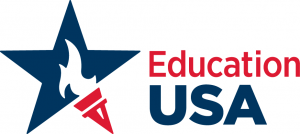
Education is provided in public, private, and home schools. State governments set overall educational standards, often mandate standardized tests for K–12 public school systems and supervise, usually through a board of regents, state colleges, and universities.
Private schools are generally free to determine their own curriculum and staffing policies, with voluntary accreditation available through independent regional accreditation authorities, although some state regulation can apply.
By state law, education is compulsory over an age range starting between five and eight and ending somewhere between ages sixteen and eighteen, depending on the state.
[10] This requirement can be satisfied in public schools, state-certified private schools, or an approved home school program. In most schools, compulsory education is divided into three levels: elementary school, middle or junior high school, and high school. Children are usually divided by age groups into grades, ranging from kindergarten (5 to 6-year-olds) and first grade (6 to 7-year-olds) for the youngest children, up to twelfth grade (17 to 18-year-olds) as the final year of high school.
There is also a large number and wide variety of publicly and privately administered colleges and universities throughout the country. Post-secondary education is divided into college, as the first tertiary degree, and graduate school. Higher education includes extremely wealthy and selective universities, public research universities, private liberal arts colleges, historically black colleges and universities, community colleges, for-profit colleges, and many other kinds and combinations of institutions.
In 2000, 76.6 million students had enrolled in schools from kindergarten through graduate schools. Of these, 72 percent aged 12 to 17 were considered academically “on track” for their age, i.e. enrolled in at or above grade level. Of those enrolled in elementary and secondary schools, 5.7 million (10%) were attending private schools
Over 85 percent of the adult population have completed high school and 27 percent have received a bachelor’s degree or higher. The average salary for college or university graduates is greater than $51,000, exceeding the national average of those without a high school diploma by more than $23,000
The country has a reading literacy rate of 99% of the population over age 15,In 2014, a record high of 82% of high school seniors graduated.
Formal education in the U.S. is divided into a number of distinct educational stages. Most children enter the public education system around ages five or six. Children are assigned into year groups known as grades.
The American school year traditionally begins at the end of August or early in September, after a traditional summer vacation or break. Children customarily advance together from one grade to the next as a single cohort or “class” upon reaching the end of each school year in late May or early June.
Depending upon their circumstances, children may begin school in pre-kindergarten, kindergarten, or first grade. Students normally attend 12 grades of study over 12 calendar years of primary/elementary and secondary education before graduating and earning a diploma that makes them eligible for admission to higher education. Education is mandatory until age 16 (18 in some states).
In the U.S, first grade are used for identifying grades. Typical ages and grade groupings in contemporary, public, and private schools may be found through the U.S. Department of Education.
Generally, there are three stages: elementary school (K–5th grade), middle school (6th–8th grades), and high school (9th–12th grades)
College (University) | Undergraduate school |
| age |
First year: “freshman year” | 18-19 | ||
Second year: “sophomore year” | 19-20 | ||
Third year: “junior year” | 20-21 | ||
Fourth year: “senior year” | 21-22 | ||
Graduate school | 22 and up | ||
US colleges and universities offer diverse educational venues: some emphasize a vocational, business, engineering, or technical curriculum (like polytechnic universities and land-grant universities) and others emphasize a liberal arts curriculum. Many combine some or all of the above, as comprehensive universities.
The term “college” refers to one of three types of education institutions: (stand-alone higher-level education institutions that are not components of a university)
- Community colleges
- Liberal arts colleges
- A college within a university, mostly the undergraduate institution of a university.
Almost all colleges and universities are coeducational. Some U.S. states offer higher education at two year “colleges” formerly called “community colleges”. The change requires cooperation between community colleges and local universities.
Four-year colleges often provide the bachelor’s degree, most commonly the Bachelor of Arts (B.A.) or Bachelor of Science (B.S.). They are primarily either undergraduate only institutions (e.g. liberal arts colleges), or the undergraduate institution of a university (such as Harvard College, Yale College, and Columbia College).
Higher education has led to the creation of accreditation organizations, independent of the government, to vouch for the quality of degrees. They rate institutions on academic quality, the quality of their libraries, the publishing records of their faculty, the degrees which their faculty hold, and their financial solvency.
Universities are educational institutions with undergraduate and graduate programs. For historical reasons, some universities, have retained the term college instead of “university” for their name. Graduate programs grant a variety of master’s degrees (like the Master of Arts (M.A.), Master of Science (M.S.), Master of Business Administration (M.B.A.) or Master of Fine Arts (M.F.A.)) in addition to doctorates such as the Ph.D. The Carnegie Classification of Institutions of Higher Education distinguishes among institutions on the basis of the prevalence of degrees they grant and considers the granting of master’s degrees necessary, although not sufficient, for an institution to be classified as a university
The Stern School of Business is New York University’s business school
Some universities have professional schools. Examples include journalism school, business school, medical schools, pharmacy schools (Pharm.D.), and dental schools. A common practice is to refer to these disparate faculties within universities as colleges or schools.[citation needed]
The American university system is largely decentralized. Public universities are administered by the individual states and territories, usually as part of a state university system. Except for the United States service academies and staff colleges, the federal government does not directly regulate universities.
Students can apply to some colleges using the Common Application. With a few exceptions, most undergraduate colleges and universities maintain the policy that students are to be admitted to (or rejected from) the entire college, not to a particular department or major. (This is unlike college admissions in many European countries, as well as graduate admissions.) Some students, rather than being rejected, are “wait-listed” for a particular college and may be admitted if another student who was admitted decides not to attend the college or university. The five major parts of admission are ACT/SAT scores, grade point average, college application, essay, and letters of recommendation. The SAT’s usefulness in the admissions process is controversial. Each state has its own set of residency laws and requirements that dictate educational benefits as a reward for state residence. As a result, public colleges and universities in many states charge out-of-state applicants a higher rate of tuition than resident students must pay.


